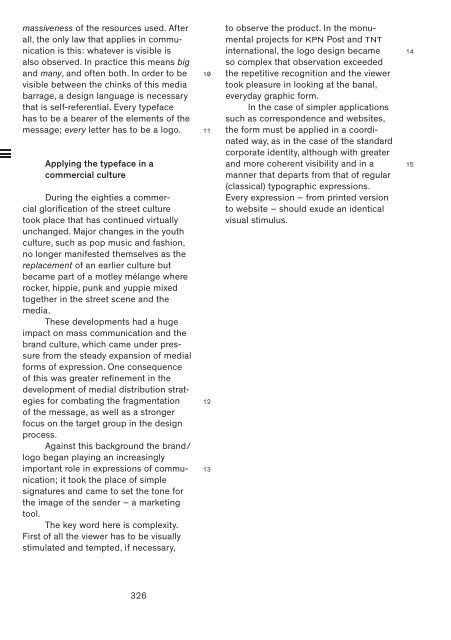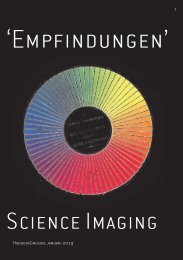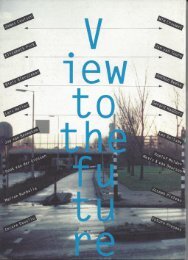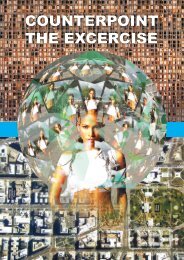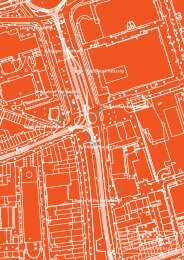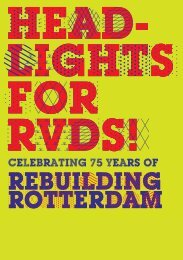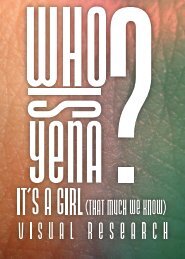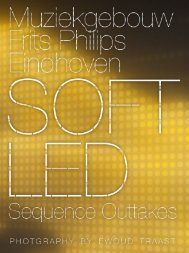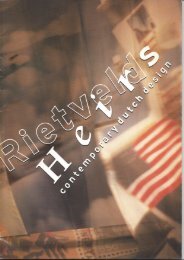Letter=Image, excerpt from The Triumph of Typography
Typography is far more than type design and layout. It touches on one of the key values of our society: the printed free word, democratic discourse. It is thanks to the power of typography that this discourse has assumed the form of a game of argument and counter-argument. The new-media technology calls into question our accepted notion of typographic communication and raises a number of essential questions that we cannot ignore. Never since Gutenberg's invention of moveable type in the fifteenth century has typographic communication been exposed to such a fundamental change as it is today. Can typography still play a significant role when digitisation and new media shake at the foundations of the typographic trade? Now this trade finds itself at a crossroads. What direction will it take in its further development? This book not only dwells on what moves and inspires today's typographer, but also elaborates on new developments in the field of typography. In The Triumph of Typography, 21 international experts in the fields of typography and communication in the broadest sense of the word share their expertise with fascinating analyses and examples. With contributions by: Peter Bil'ak, Petr van Blokland, Hans Rudolf Bosshard, Paul van Capelleveen, Roger Chartier, Paul Dijstelberge, Yuri Engelhardt, Willem Frijhoff, Christof Gassner, Michael Giesecke, Britt Grootes, Gerard Hadders, Henk Hoeks, Ralf de Jong, Ewan Lentjes, Ellen Lupton, Lev Manovich, Jack Post, Rick Poynor, José Teunissen, Wouter Weijers.
Typography is far more than type design and layout. It touches on one of the key values of our society: the printed free word, democratic discourse. It is thanks to the power of typography that this discourse has assumed the form of a game of argument and counter-argument. The new-media technology calls into question our accepted notion of typographic communication and raises a number of essential questions that we cannot ignore. Never since Gutenberg's invention of moveable type in the fifteenth century has typographic communication been exposed to such a fundamental change as it is today. Can typography still play a significant role when digitisation and new media shake at the foundations of the typographic trade? Now this trade finds itself at a crossroads. What direction will it take in its further development? This book not only dwells on what moves and inspires today's typographer, but also elaborates on new developments in the field of typography. In The Triumph of Typography, 21 international experts in the fields of typography and communication in the broadest sense of the word share their expertise with fascinating analyses and examples. With contributions by: Peter Bil'ak, Petr van Blokland, Hans Rudolf Bosshard, Paul van Capelleveen, Roger Chartier, Paul Dijstelberge, Yuri Engelhardt, Willem Frijhoff, Christof Gassner, Michael Giesecke, Britt Grootes, Gerard Hadders, Henk Hoeks, Ralf de Jong, Ewan Lentjes, Ellen Lupton, Lev Manovich, Jack Post, Rick Poynor, José Teunissen, Wouter Weijers.
Create successful ePaper yourself
Turn your PDF publications into a flip-book with our unique Google optimized e-Paper software.
massiveness <strong>of</strong> the resources used. After<br />
all, the only law that applies in communication<br />
is this: whatever is visible is<br />
also observed. In practice this means big<br />
and many, and <strong>of</strong>ten both. In order to be<br />
visible between the chinks <strong>of</strong> this media<br />
barrage, a design language is necessary<br />
that is self-referential. Every typeface<br />
has to be a bearer <strong>of</strong> the elements <strong>of</strong> the<br />
message; every letter has to be a logo.<br />
Applying the typeface in a<br />
commercial culture<br />
During the eighties a commercial<br />
glorification <strong>of</strong> the street culture<br />
took place that has continued virtually<br />
unchanged. Major changes in the youth<br />
culture, such as pop music and fashion,<br />
no longer manifested themselves as the<br />
replacement <strong>of</strong> an earlier culture but<br />
became part <strong>of</strong> a motley mélange where<br />
rocker, hippie, punk and yuppie mixed<br />
together in the street scene and the<br />
media.<br />
<strong>The</strong>se developments had a huge<br />
impact on mass communication and the<br />
brand culture, which came under pressure<br />
<strong>from</strong> the steady expansion <strong>of</strong> medial<br />
forms <strong>of</strong> expression. One consequence<br />
<strong>of</strong> this was greater refinement in the<br />
development <strong>of</strong> medial distribution strategies<br />
for combating the fragmentation<br />
<strong>of</strong> the message, as well as a stronger<br />
focus on the target group in the design<br />
process.<br />
Against this background the brand/<br />
logo began playing an increasingly<br />
important role in expressions <strong>of</strong> communication;<br />
it took the place <strong>of</strong> simple<br />
signatures and came to set the tone for<br />
the image <strong>of</strong> the sender – a marketing<br />
tool.<br />
<strong>The</strong> key word here is complexity.<br />
First <strong>of</strong> all the viewer has to be visually<br />
stimulated and tempted, if necessary,<br />
10<br />
11<br />
12<br />
13<br />
to observe the product. In the monumental<br />
projects for KPN Post and TNT<br />
international, the logo design became<br />
so complex that observation exceeded<br />
the repetitive recognition and the viewer<br />
took pleasure in looking at the banal,<br />
everyday graphic form.<br />
In the case <strong>of</strong> simpler applications<br />
such as correspondence and websites,<br />
the form must be applied in a coordinated<br />
way, as in the case <strong>of</strong> the standard<br />
corporate identity, although with greater<br />
and more coherent visibility and in a<br />
manner that departs <strong>from</strong> that <strong>of</strong> regular<br />
(classical) typographic expressions.<br />
Every expression – <strong>from</strong> printed version<br />
to website – should exude an identical<br />
visual stimulus.<br />
14<br />
15<br />
326<br />
<strong>The</strong> <strong>Triumph</strong> <strong>of</strong> <strong>Typography</strong> (16 mrt).indd 326 31-03-15 11:21


